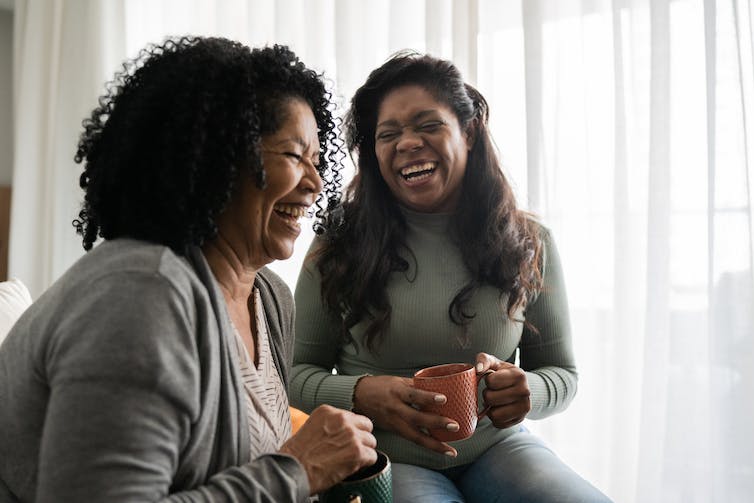The benefits of friendship go far beyond having someone to confide in or spend time with – it can also protect you from physical and mental health problems. For example, people with good friends recover more quickly from illnesses and surgeries. They report higher well-being and feel like they live up to their full potential. Additionally, people with good friends report being less lonely across many life stages, including adolescence, becoming a parent and old age.
In fact, friendships are so powerful that the social pain of rejection activates the same neural pathways that physical pain does.
Behavioral scientists like me have tended to focus our research about friendships on their benefits. How to cultivate these powerful relationships hasn’t been as deeply researched yet. Understanding more about what people look for in a friend and how to make and sustain good friendships could help fight the loneliness epidemic.
Traditional conceptions of friendship
Previous generations of behavioral scientists traditionally focused on the notion that people form friendships with those who are similar, familiar and in close proximity to them.
When you look at all the friendships you’ve had over your life, these three factors probably make intuitive sense. You’re more likely to have things in common with your friends than not. You feel an increased sense of familiarity with friends the longer you know them – what psychologists call the mere exposure effect. And your friends are more likely to live or work near you.
Researchers in this field have also typically divided friendship preferences based on gender. The dichotomy suggests that women prefer one-on-one, emotionally close and face-to-face friendships, while men prefer multi-person, task-oriented and side-by-side friendships, with the focus on a shared activity.

Research suggests that women on average prefer a one-on-one, close friendship style.
FG Trade/E+ via Getty Images
Again, when looking at your own friendships, these findings may seem intuitive. Women on average prefer to engage in activities that allow for self-disclosure and sharing secrets, such as spending time one-on-one talking about their lives. Men, on the other hand, tend to prefer to engage in activities that are group-based and have a clearly defined outcome, such as playing sports together. Findings such as these show that gender and preferences on how to connect are important in friendships.
But these explanations of friendship do not address the most important aspect of making friends – choosing the individual people you want to turn into your pals. Friendship decisions are not random. There are many people who are similar, familiar, in close proximity and have similar preferences as you. Yet few of these individuals end up being your friends.
So, in a world full of possibilities, how do people pick those who will become their friends?



